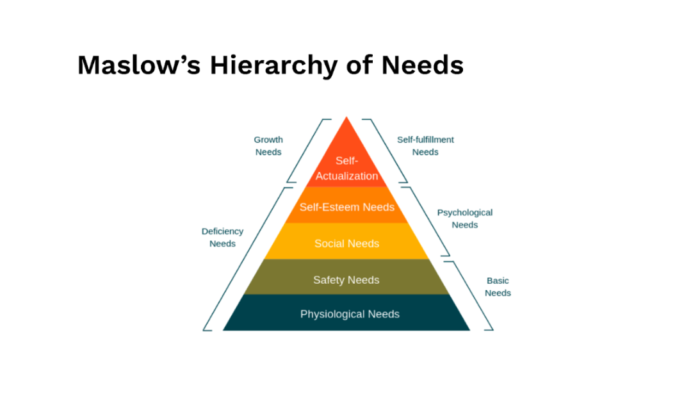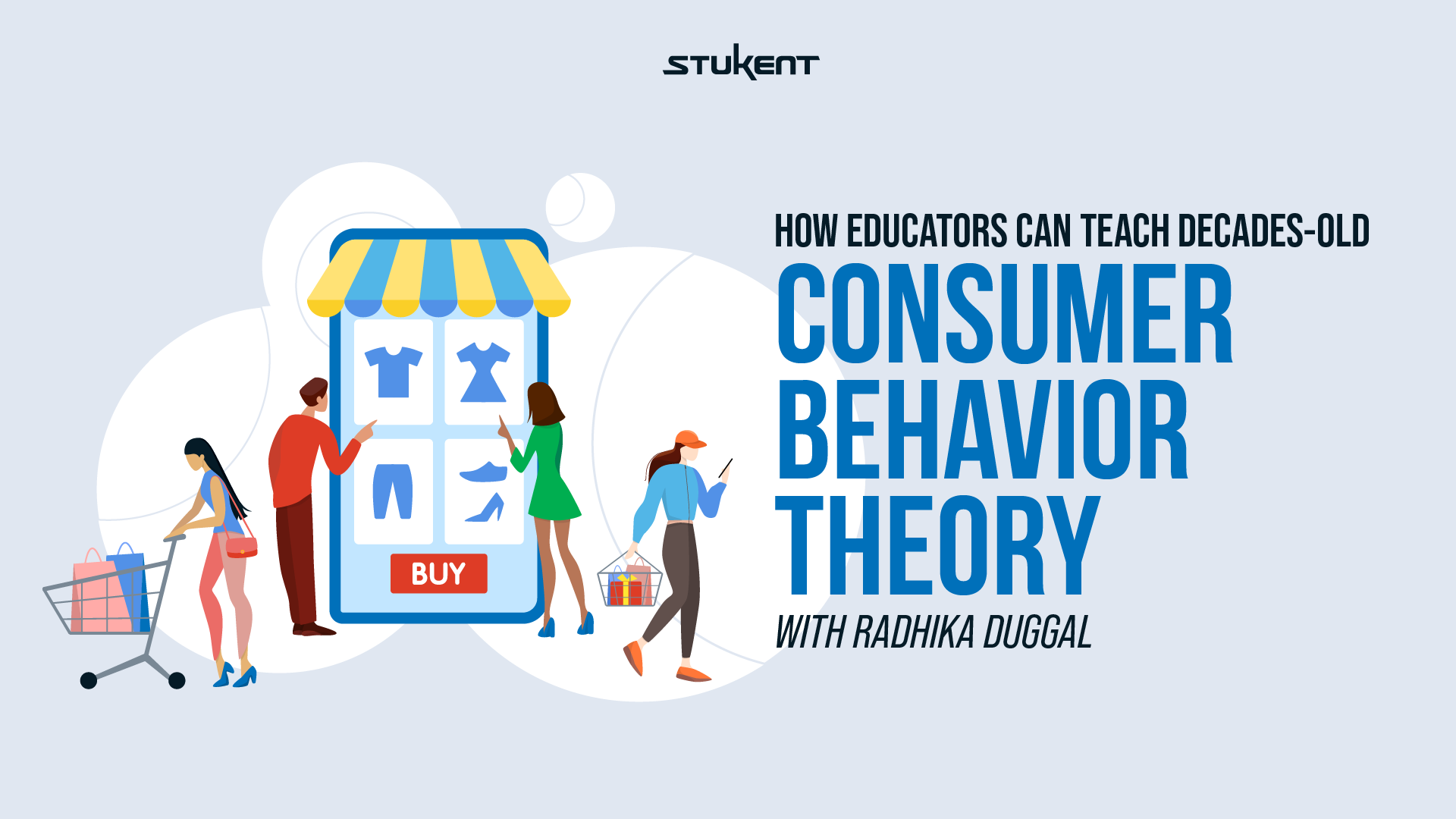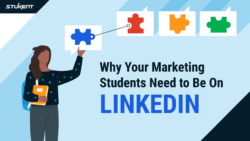Products may change, but core consumer behavior stays the same. Though Maslow’s hierarchy of needs may be an 80-year-old theory, it still has powerful implications for marketers today. Maslow’s theory sheds light on the needs that motivate consumers to act; understanding this basic consumer behavior model will better equip students for their future careers.
Radhika Duggal, the author of Stukent’s “Consumer Behavior” courseware, joined us at ProfCon 2022 to discuss consumer behavior and the power of Maslow’s hierarchy of needs. In her one-hour session, Radhika discussed how savvy brands found ways to tie their products to compelling human needs — both basic and aspirational.
If you missed Radhika’s presentation, “How Educators Can Teach Decades-old Consumer Behavior Theory in a Way That Is Relevant Today,” you may watch it on demand in the Stukent Webinars Library. Or, read on for a recap of Radhika’s insights!
Maslow’s Hierarchy of Needs
Psychologist Abraham Maslow introduced his hierarchy of needs in 1943, which essentially states that humans must meet their fundamental needs before they are motivated to achieve self-actualization or transcendence. According to Radhika, understanding Maslow’s hierarchy of needs helps marketers understand how to create and position products that align with consumer needs.

The first four needs “are all deficiency needs,” Radhika says. “But self-actualization at the top of the pyramid is a growth need. … It’s about achieving personal growth and reaching your full potential.” Once an individual fulfills their deficiency needs, the desire for self-actualization grows. In other words, once individuals achieve long-term goals — whether personal or professional — they typically set new ones. People focus on becoming everything they can be.
So, what does this mean for marketers? “Figure out which of the needs will spark the most significant emotional connection with consumers,” Radhika says, “[and then] position [your products] there.” Even brands that produce everyday products can find ways to position themselves in the self-actualization space.
“This is about figuring out the underlying unmet need and figuring out how to use marketing to connect with those consumers,” Radhika says. With market research and a little creativity, brands can utilize the self-actualization need to market their products and do some good in the world, too.
Consumer Goods
For example, consumer goods company Procter & Gamble found ways to position their products to fulfill self-actualization needs — an impressive feat for a company that produces dishwashing liquid and toothpaste!
“Today, [Procter & Gamble] has this community called ‘My Black Is Beautiful,’” Radhika says. “It has more than three million folks dedicated to social change and sparking a much broader dialogue.” In 2007, Procter & Gamble partnered with Essence magazine to ask Black women about their representation in everyday American culture. They found that 77% of Black women were concerned with how the media portrayed them; 71% said that Black women were portrayed as worse than other racial groups, and 69% said the negative portrayals impacted young people in Black communities. The numbers told a compelling story — Black women wanted better representation for themselves, their families, and their communities.
Procter & Gamble knew they could help fulfill this need — not just for the social good, but also because they make products for Black customers. So, the company launched the “My Black Is Beautiful” campaign to “encourage women to define and promote a standard of beauty that is authentic to [their] community,” Radhika says. When Procter & Gamble launched the campaign, they did a multi-city tour, grassroots marketing, retail promotion, advertising, and more. Procter & Gamble also created a discussion guide that helped women have conversations about how to reach their full potential, thus allowing them to achieve their self-actualization needs.
“Make no mistake,” Radhika says, “this is P&G doing marketing for [the] products [that] target this customer group.” Procter & Gamble looked at ways to create an emotional connection to its products. The campaign was wildly successful.
In 2016, Procter & Gamble revitalized the campaign with a series of short videos that featured Black mothers talking to their children about racism. “Each vignette … is based on real-life experiences of consumers that P&G unearthed through consumer market research,” Radhika says. “They created a message that appealed to the safety need, [and] they were very smart in wrapping it around experiential marketing … and building it into product placement.”
According to Radhika, understanding consumer needs and motivations is becoming increasingly vital in marketing and branding. In Stukent’s “Consumer Behavior” courseware, she writes: “Coupling focused research into consumer motivations with proven consumer behavior theory can enable marketers to develop more successful marketing communications … that will be more likely to meet consumers’ needs.” And that’s what Procter & Gamble managed to do — they coupled in-depth research with consumer behavior theory, thus allowing them to build a campaign that truly resonated with their customers.
The “My Black Is Beautiful” campaign continues to thrive in 2022.
NFTs
NFTs exploded due to the COVID-19 pandemic. Many wealthy individuals began investing in digital profiles, as NFTs allowed them to flaunt their wealth and express themselves online. “These digital tokens are essentially ways of fulfilling the self-actualization piece of who we want to be,” Radhika says. The digital world represents a new opportunity to spend on self-actualization, and what better way to drive prestige than posting an exclusive NFT?
Just like a Tesla is a form of social currency in the physical world, an NFT is a form of social currency in the digital world. If you scroll through social media, you’ll find thousands of users with CryptoPunks or Avastars. Posting an NFT says something about who you are and what you have accomplished.
But what about lower-income consumers? Radhika says that even Walmart has created patents in the NFT space, which may help to democratize them.
Social Responsibility
There’s a tier above self-actualization called transcendence. While self-actualization maximizes individual potential, “transcendence is about looking at things more holistically from the perspective of the world around you,” Radhika says. Basically, it means that people seek to achieve so much more than just their personal needs.
Why should marketers care about transcendence? “Marketers care because it’s clear that consumers care,” Radhika says. Millennial and Gen Z consumers are more likely to purchase products from mission-driven brands and will pay more to buy from a company they believe in or support. Younger consumers want to see companies giving back — whether it’s Bombas’ one-to-one sock donation program, CommonBond funding education for children in Africa, or TOMs donating a third of their profits to grassroots efforts, consumers want to see companies driving sustainable change.
“In order for a company to appeal to that need for transcendence, you’ve really got to be loud about it,” Radhika says. While she worked for CommonBond, an educational lender, the marketing team took their employees and customers to Ghana to see the impact their donations had made. “Being able to explain the impact the consumer is making by choosing your product — how they can achieve transcendence — was incredibly important,” Radhika says.
To build a marketing campaign that capitalizes on transcendence, Radhika suggests these three principles:
- You need the right program
- It needs to be easy to explain or understand
- Make your customers a part of the experience
Though Maslow’s hierarchy of needs has been around for nearly 80 years, marketers can still leverage its principles to create effective advertising campaigns. Students who learn and understand consumer behavioral principles will have the tools they need to find new, compelling ways to speak to their target audiences.
ProfCon 2022 was a three-day academic conference held from June 15 – 17, 2022. Each year, ProfCon presents actionable tips and strategies for marketing, business, and communications educators to use in their classrooms. To watch sessions on demand, visit the Stukent Webinars Library.
To learn more about Stukent’s revolutionary courseware and simulations or get FREE instructor access to our products, visit our website.






